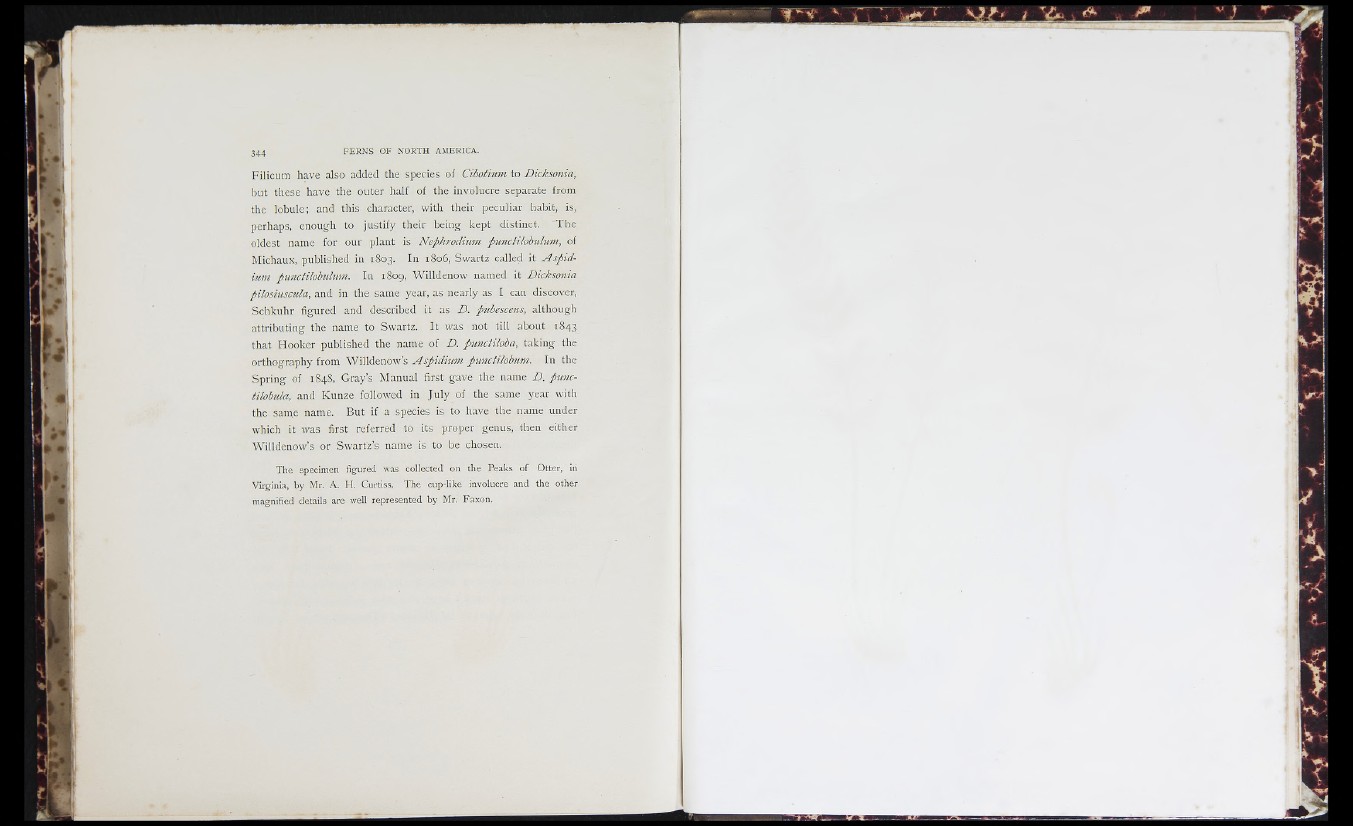
1 1 . '
u
J *
I» •'
li
Filicum have also added the species of Cibotium to Dicksonia,
but these have the outer half of the involucre separate from
the lobule; and this character, with their peculiar habit, is,
perhaps, enough to justify their being kept distinct. The
oldest name for our plant is Nephrodium punctilobulum, of
Michaux, published in 1803. In i8o6, Swartz called it Aspid-
iimi punctilobulum. In 1809, Willdenow named it Dicksonia
pilosiuscula, and in the same year, as nearly as I can discover,
Schkuhr figured and described it as D. pubescens, although
attributing the name to Swartz. It was not till about 1843
that Hooker published the name of D. punctiloba, taking the
orthography from Willdenow’s Aspidium. punctilobum. In the
Spring of 1848, Gray’s Manual first gave the name D. punc-
Hlobula, and Kunze followed in Ju ly of the same year with
the same name. But if a species is to have the name under
which it was first referred to its proper genus, then either
Willdenow’s or Swartz’s name is to be chosen.
The specimen figured was collected on the Peaks of Otter, in
Virginia, by Mr. A. H. Curtiss. The cup-Uke involucre and the other
magnified details are well represented by Mr. Faxon.
f i